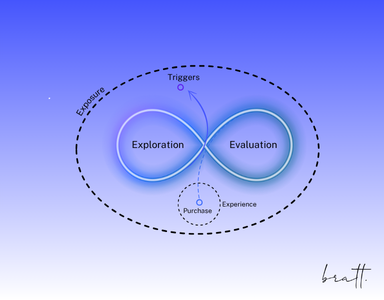
For years, marketing has been all about funnels—that predictable path where customers move from awareness to consideration to purchase.
But let’s be real: no one actually shops like that.
No customer wakes up thinking, “Time to move to the next stage of the funnel!” Instead, they explore, get distracted, scroll through TikTok, ask their friends, listen to a podcast, and maybe—just maybe—buy something when it feels right.
This is exactly what Daniel Priestley talked about on The Diary of a CEO podcast with Steven Bartlett. If you don’t know him, Priestley is an entrepreneur, investor, and the author of Key Person of Influence and Oversubscribed. He’s built multiple businesses and studies how people actually make decisions.
In the episode, he pointed out something that’s so obvious but still ignored by most brands:
🔹 Customers don’t want to be “funneled” into a sale
🔹 They want to go on an adventure
🔹 Brands should be creating a “playground” for interaction
That stuck with me because so many businesses are still clinging to outdated marketing tactics, trying to force people down a linear process. But the truth is, that customers today want to explore, engage, and take their time.
Forget the Funnel—Think of Marketing as a Playground
We’re in an experience-driven world now. The brands that win aren’t the ones with the best conversion tactics; they’re the ones that create fun, engaging spaces for discovery.
Instead of pushing people toward a sale, what if your brand gave them ways to:
✅ Watch a short, engaging video that sparks curiosity
✅ Listen to a podcast that dives deeper into your brand story
✅ Join a community where they can connect with like-minded people
✅ Interact with quick, easy content like polls, quizzes, and comments
It’s not about tricking people into buying. It’s about creating an experience so good they want to be a part of it.
FOMO Isn’t Working Anymore
For years, brands have relied on FOMO (fear of missing out) to drive sales—limited-time offers, countdown clocks, “only 2 left in stock” pop-ups. And sure, that worked for a while.
But guess what? FOMO is losing its power.
People know they have options. They can Google alternatives, wait for a sale, or just move on. The urgency tactics that once made people panic-buy are now making them roll their eyes.
So instead of pushing fake urgency, brands need to:
💡 Create actual value. Show why your product is worth it, not why they have to rush. 💬 Foster long-term relationships. Make customers want to come back because they love your brand, not because they’re scared of missing a deal.
Let people take their time.
The best marketing isn’t about pressuring—it’s about making customers feel like they’re in control.
How to Build a Marketing Playground
🔹 Engagement first, conversion second. People buy from brands they trust. Give them reasons to interact before pushing a sale.
🔹 Multiple entry points. Not everyone finds you the same way—some through social, some through word-of-mouth, some through deep research. Make sure you have different ways for people to engage.
🔹 Community matters. Brands with strong communities (whether it’s on social, in a forum, or through collaborations) keep people coming back.
🔹 Make discovery fun. Let people explore at their own pace. No pressure, just good experiences.
At the end of the day, customers aren’t looking for a funnel—they’re looking for an adventure.
So the real question is: Are you still trying to force people down a sales pipeline, or are you building a place they actually want to be?
Writer
Ezra Dalkin
Cetegory
Marketing
Reading Time
8 Minute

.svg)



